Isachne R. Br.
swamp millet
Poaceae
Luziola and many grasses
throughout the tropics, mainly Asia
occasionally offered:
Isachne confusa Ohwi
I. globosa (Thunb.) Kuntze
not known
not weedy
amphibiousamphibious:
(adj) of a plant able to live on land or in water
, semi-aquatic, floating or emergentemergent:
(adj) (syn. emersed) with parts raised out of the water; extending up out of the water
grass
Rhizomatousrhizomatous:
(adj) possessing rhizomes
or stoloniferous; culms ascending to erect, often branched above, nodes glabrousglabrous:
(adj) without hairs or scales
, or pubescentpubescent:
(adj) (1) covered with short, soft hairs; (2) bearing hairs
, lower nodes often rooting. Liguleligule:
(n) (1) a strap-shaped structure; (2) an often thin, membranous or hairy structure projecting from the top of the leaf sheath in grasses and a few other families; (3) the flattened part of the ray corolla in the Asteraceae
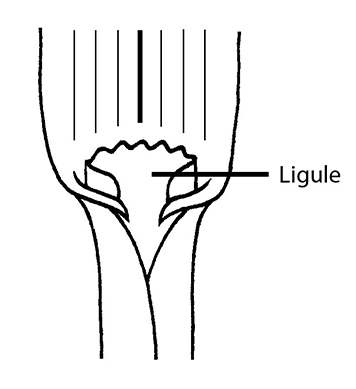 a fringe of hairs, or absent; auriclesauricle:
a fringe of hairs, or absent; auriclesauricle:
(n) an ear-shaped lobe or appendage at the base of some leaves and flower petals
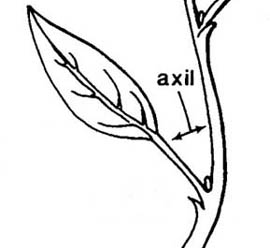 absent; sheath shorter than internodes, glabrousglabrous:
absent; sheath shorter than internodes, glabrousglabrous:
(adj) without hairs or scales
or pilose, marginmargin:
(n) edge; rim
typically ciliateciliate:
(adj) with a marginal fringe of stiff hairs
; bladeblade:
(n) (syn. lamina) the flat, expanded part of a leaf, frond, or petal (excluding, e.g., the petiole)
 narrowly lanceolatelanceolate:
narrowly lanceolatelanceolate:
(adj) lance-shaped; widest point below the middle, tapering to the apex
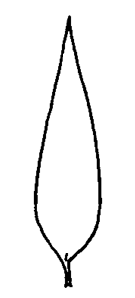 to ovateovate:
to ovateovate:
(adj) egg-shaped in outline; generally with the broad end at or near the base
 , firm, glabrousglabrous:
, firm, glabrousglabrous:
(adj) without hairs or scales
; base cordatecordate:
(adj) heart-shaped; in the form of two rounded lobes
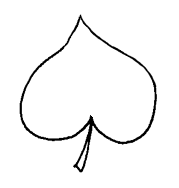 or rounded, amplexi caulinecauline:
or rounded, amplexi caulinecauline:
(adj) pertaining to or belonging to the stem
; apexapex:
(n) the point farthest from the point of attachment; the tip (often pointed)
acute or acuminateacuminate:
(adj) tapering gradually to a point and forming more or less concave sides
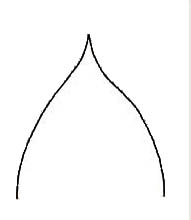 ; veins prominent, cross venationvenation:
; veins prominent, cross venationvenation:
(n) the arrangement of veins in a leaf
absent. Inflorescenceinflorescence:
(n) the arrangement of flowers on the floral axis
 a terminalterminal:
a terminalterminal:
(adj) at the apex
panicle, open, or rarely contracted; exsertedexserted:
(adj) projecting beyond, sticking out or protruding
, or basally embraced by subtending leaf; ellipticelliptical:
(adj) in the form of an ellipse (oval)
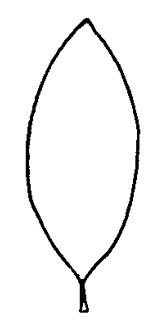 to ovateovate:
to ovateovate:
(adj) egg-shaped in outline; generally with the broad end at or near the base
 , or pyramidal in outline; primary branches stiff, spreading; branchlets capillarycapillary:
, or pyramidal in outline; primary branches stiff, spreading; branchlets capillarycapillary:
(adj) slender, hair-like
. Spikelets solitary; fertilefertile:
(adj) producing viable seed, spores, or pollen; capable of reproducing
spikelets pedicelled, length variable; ellipticelliptical:
(adj) in the form of an ellipse (oval)
 to globoseglobose:
to globoseglobose:
(adj) spherical or nearly so
, dorsally compressed; green or purplish; florets 2, both fertilefertile:
(adj) producing viable seed, spores, or pollen; capable of reproducing
or 1 sterilesterile:
(adj) lacking male and/or female reproductive parts; not producing fruit, seed, pollen, spores, etc.
.
moist to wet open places, in or near shallow water, marshes, swamps, creeks, lagoons, streams, rivers, lakes, in seasonally inundated floodplains; rice fields
Of the nearly 100 species within Isachne, the majority are amphibiousamphibious:
(adj) of a plant able to live on land or in water
. Several species, in addition to those cultivated, are regularly found in inundated to permanently wet habitats: Isachne albens Trin., I. guineensis Stapf & C.E.Hubb., I. lisboae Hook.f., I. myosotis Nees, I. polygonoides (Lam.) Döll, and I. pulchella Roth.
Isachne globosa is widely known in the trade as "purple bamboo".
Spikelets are essential for accurate identification.